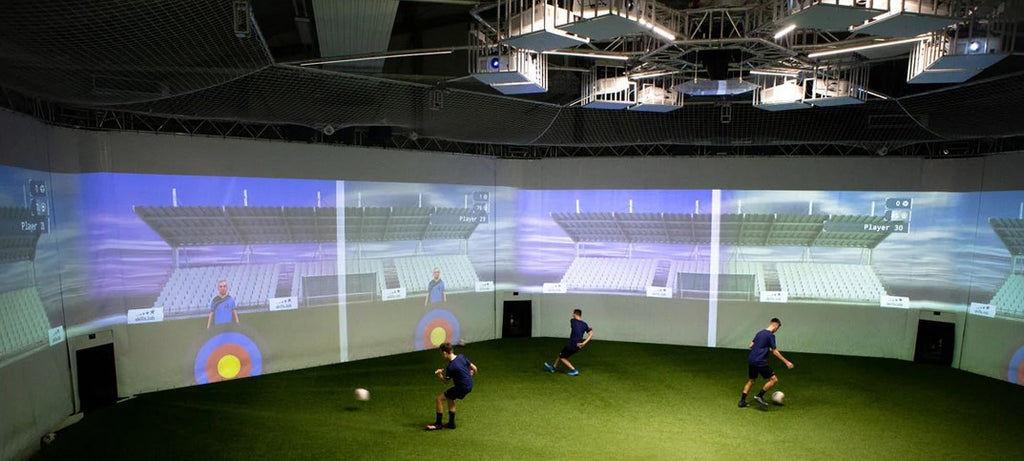The Teledyne FLIR camera portfolio is ideal for numerous applications in government & defense, industrial, scientific, and commercial markets. With such a wide range of vision options we wanted to outline some of the real world vision systems these cameras are used in. Listed below are just a few of the case studies:
1. HNu Photonics: Microscopy Imaging
HNu Photonics is a developer of cutting-edge flight and ground based hardware for aerospace and defense sectors. Using Teledyne FLIR machine vision cameras, the SCORPIO-V division of HNu Photonics is working with NASA to better understand how spaceflight and microgravity impacts humans on a cellular level.
NASA’s Human Research Program (HRP) has spent the last five decades studying what happens to the human body in space. From space radiation to changing gravity fields, the conditions encountered during space travel could have long-term and potentially dangerous effects on human physiology.
As part of their contract with NASA, HNu Photonics is working to provide various microscopy solutions onboard the International Space Station (ISS). Researchers will use what they learn from microscopy experiments to design new devices and strategies to help keep astronauts healthy both during their missions and in the long term.

2. AWM Frictionless: FFY Deep Learning
Items in an AWM Frictionless™ store are tracked using FLIR Blackfly S GigE cameras and a deep learning algorithm trained to correctly identify products and add them to the shopper’s basket. The system also knows how to remove an item from the virtual shopping basket if the customer decides to put it back on the shelf. It even keeps track of a shopping bag if the customer puts it down and wanders into the next aisle.

3. Zaber: Microscopy with Blackfly
One of the ways Zaber was able to develop an affordable yet high-performance microscope is by simplifying the optical path significantly. By eliminating the binocular eyepieces and relying solely on FLIR Blackfly USB3 cameras for image viewing and capture, vision system designers were able to eliminate several precision prisms, lenses, and iris diaphragms typically found inside a microscope. This approach resulted in cost savings, high-end performance, and a reduction in the footprint of the microscopes.

4. Anton Paar Player Assessment through skills.lab.com Using Grasshopper & Oryx Cameras
The skills.lab Arena is the first system to transparently assess, compare, and track the fundamental technical skills of a player with an immersive and data-driven training experience on 320 m². It provides coaching staff with complete and truly holistic views of a player's capabilities and provide information to create targeted individual training programs as well as monitor the player development. The skills.lab Arena utilizes automated ball machines, 360° projection screens, state of the art measurement technology and data science to allow highly intense football training and in-depth data analyses. HD cameras as well as laser and positioning sensors in combination with complex algorithms deliver a variety of highly valuable data such as ball handling time and ball speed in real time.
Because of the fixed installation and controlled ambient light, the key factors in choosing the Grasshopper 3 and the Oryx series for this application were for the pure performance data of the cameras, cost-effectiveness, and the ease of software integration with the Linux operating system. Other critical system requirements include the ability to see long distances (up to 60 m) and the ability of the camera and lens mounts to withstand vibrations and flying soccer balls.

5. Astronomy: Image Capture of the Sun
Alan Friedman, a well-known amateur astronomer and astro-photographer captured these stunning images of the sun from his backyard in Buffalo, New York. He has been using a number of different cameras ranging from 0.3 to 6 megapixel, combined with a solar telescope using a Hydrogen alpha filter (656.3 nm). The pictures consist of several different exposures of the sun that are combined or stacked together. The fine filaments are solar prominences seen end on. Dark regions are small sunspots while brighter plage (spots) mark highly magnetized regions.


Photo Credit:Teledyne FLIR
6. NASA Perseverance Rover
On April 18, 2021, The NASA Perseverance Rover landed on Mars and the FLIR cameras were there to capture it!
The cameras that captured this footage areFLIR RGB machine vision cameras, and include five 1.3-megapixel cameras and one 3.1-megapixel USB camera. “Our cameras are designed for operation on Earth, and not built to operate in outer space,” said Sadiq Panjwani, VP of the Integrated Imaging Solutions (IIS) division at FLIR. “So we were quite thrilled that NASA put them to the test.”
NASA began contacting FLIR in 2015 to investigate suitable cameras for the EDL (Entry, Descent Landing) system. Engineers were looking for commercial off the shelf (COTS) hardware with an emphasis on low cost and ease of system integration.
This is the first time that FLIR machine vision cameras have been subjected to the extreme temperatures or high gravity forces experienced during the Mars landing. Everyone involved in engineering and manufacture of cameras at FLIR is thrilled about this testament to their durability and performance. And of course, ecstatic to say that their work has made it to Mars!
For more information on the ways that FLIR cameras may be suitable for your application, send us a chat, email, or give us a call!
Source:
Teledyne FLIR: https://www.flir.com/discover/iis/machine-vision/







